Eruption started in Sundhnúkagígar area í Svartsengi volcano. The start of eruption seems to have been at 12:47 UTC or around that minute. The fissure is getting longer as this article is being written.
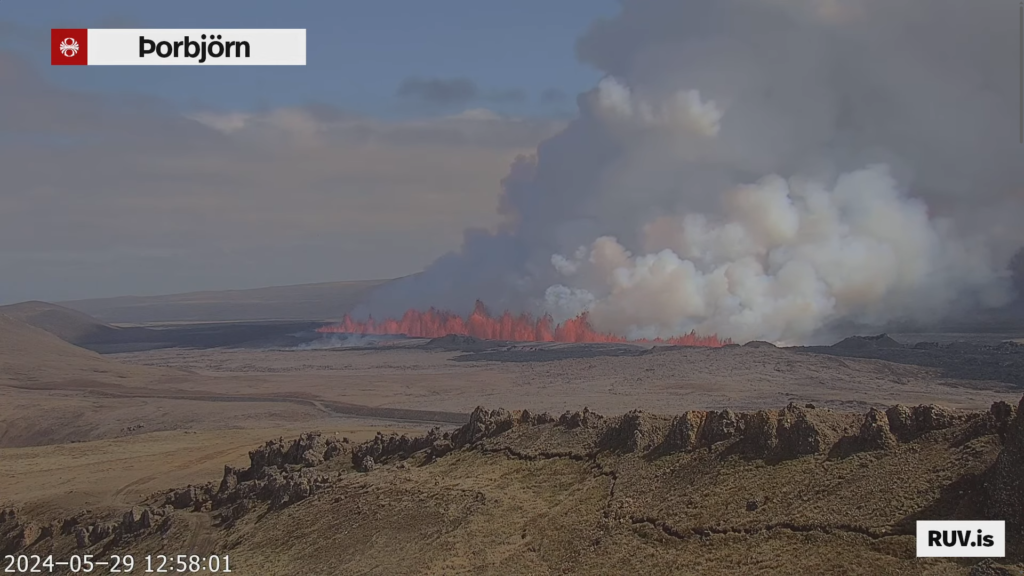

Volcano and earthquake activity in Iceland
Eruption is about to start in Svartsengi volcano in Sundhnúkagígar area. This is unlikely to be a dyke intrusion event only. I’ll post update once the eruption has started.
Today (5-May 2024) at 20:33 UTC an earthquake with magnitude of Mw3,5 took place close to Eldey on the Reykjanes ridge. This is out in the ocean and considerable distance from land, so more earthquakes are happening then are being registered by Icelandic Met Office.
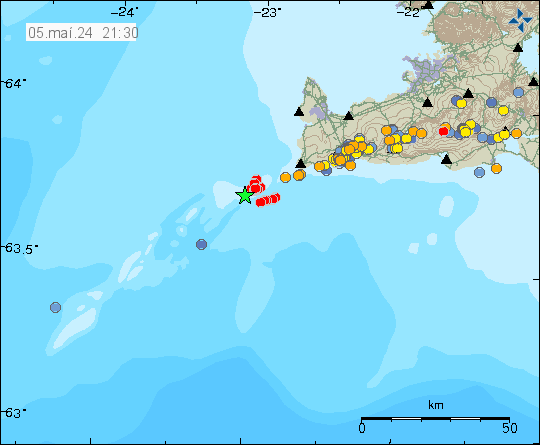
This earthquake swarm is ongoing at the writing of this article. There are earthquakes that are only going to appear on Icelandic Met Office website after manual review in this earthquake swarm.
Today (22. April 2024) at 04:53 UTC an earthquake swarm started in Reykjanes volcano. This was not a strong or a large earthquake swarm. Largest earthquake only having a magnitude of Mw3,1. All other earthquakes where smaller in magnitude.
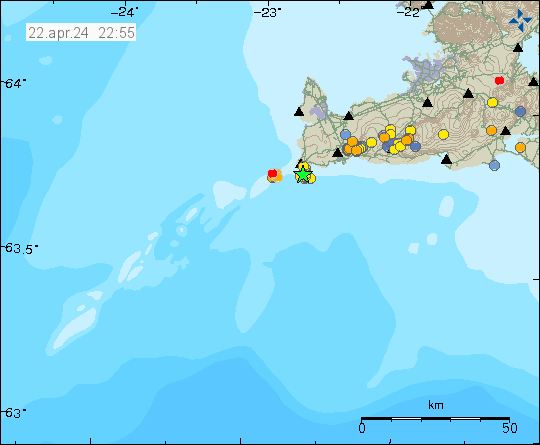
This earthquake activity suggest a magma movement. It is however too little to start an eruption at the writing of this article. That can change without warning. Since the condition that the Reykjanes volcano is in is unclear, since its in part under the ocean and that makes monitoring it properly difficult and impossible in some areas.
This morning on 21. April 2024 at 06:37 UTC an earthquake with magnitude of Mw5,4 took place in Bárðarbunga volcano. Largest aftershock had a magnitude of Mw3,0. There’s no earthquake swarm going on at the time of writing of this article. This earthquake was felt in some parts of Iceland but was possibly detected over most of Iceland in a quiet locations.

This is the strongest earthquake in Bárðarbunga volcano since the eruption in Holuhraun in the year 2014 to 2015. This earthquake activity is a long term signal that inflation in Bárðarbunga volcano has reached a new level. Eruption is not going to happen or is extremely unlikely to happen following this earthquake or in next few years. Shortest time between eruptions in Bárðarbunga volcano is around 10 years.
This is how I recorded the earthquake on my own seismometer.

I am sorry how late I am with this article. I was busy yesterday (13. April 2024) and I was unable to write this article at that time.
Yesterday (13. April 2024) at 10:02 UTC an earthquake with a magnitude of Mw3,3 took place just south of Kleifarvatn lake in Krýsuvík volcano. This earthquake swarm seems to have happened on a fault that is mostly known for earthquakes that are connected to tectonic movements in the area. This is not a fault that is connected to volcano related activity, as those are more in south-west and north-east direction. Faults that are connected to crust movement in this area have the direction north-south as seems to be the case this time. It complicates matter that magma movement deep in the crust can result in earthquakes happening on both type of faults. As I suspect what happened here.

Krýsuvík volcano is not ready to start an eruption, best I can see. It is also missing a lot more earthquake activity before an eruption starts. But the signs that it is moving in that direction have started to appear. How long the wait is going to be when a eruption starts is impossible to know.
Today (25. March 2024) starting at 08:06 UTC and ending around 11:00 UTC an earthquake swarm started in Askja volcano. The largest earthquake in this swarm had a magnitude of Mw3,5. The area is remote and this earthquake was not felt.
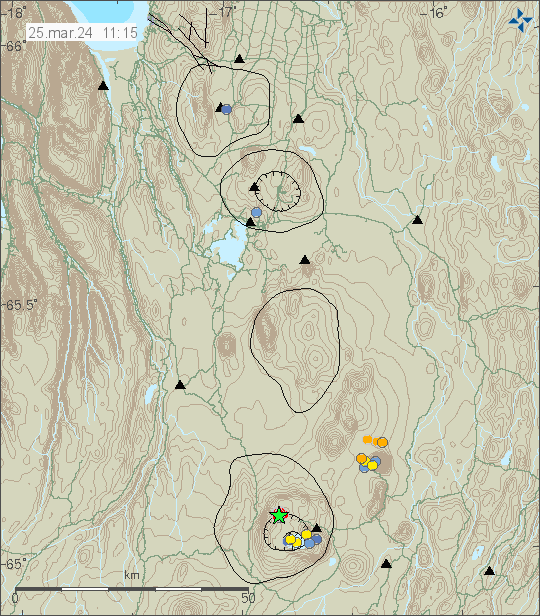
This earthquake activity suggests that this was a dyke intrusion. Eruption is unlikely at the moment in Askja volcano. This activity might be the first indicators that Askja volcano has started to prepare for an eruption in the future. When is impossible to know.
This is a short update on the eruption in Sundhnúkagígar in Svartsengi volcano.
This is all for now. Next update is going to be when something new happens. If this eruption is going to last for a long time. I’ll post regular updates on it. But for now, this eruption is just going to continue as is now doing.
This is a short update since there has not been a lot of change in the last twenty four hours.
The eruption is stable at the writing of this article. This might change without warning.
If there is a change in the eruption. I’ll write about it quickly as I can. Next article should be by 21. March 2024 if the eruption is still ongoing by that date.
Today (18. March 2024) at 00:45 UTC an earthquake with magnitude of Mw4,7 (EMSC Information) took place in Bárðarbunga volcano. Icelandic Met Office had this magnitude at Mw4,4.
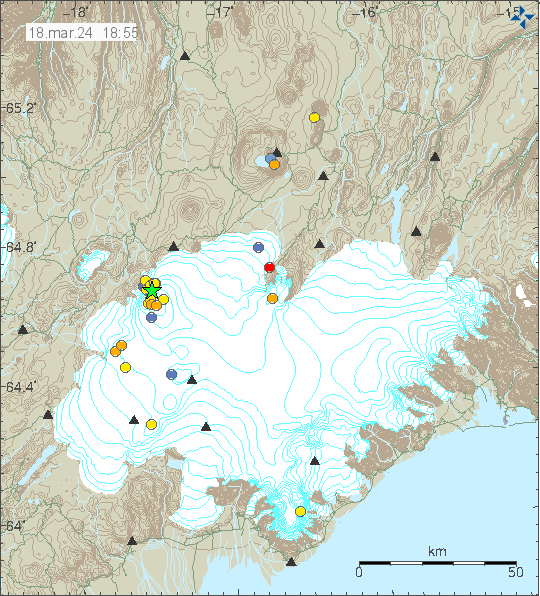
This earthquake is part of the inflation that is happening in Bárðarbunga volcano. This is going to continue to happen every few months for the next few years to decades until the magma chamber in Bárðarbunga volcano in it is fully inflated.